
For photography lovers, Les Rencontres de la Photographie in Arles is a “must” festival. Now in its 48th year, it runs through September 24 and features a nearly overwhelming menu of over 40 exhibitions, as well as evening projections, artist talks, book signings, and even a taco truck or two.

The festival has grown over the years from its more humble beginnings as a photographers’ meeting. With 17,500 visitors in the first week, representing a 15 percent increase over last year, the festival organizers have developed some new spaces for exhibiting work and receiving visitors, although the increased numbers have stretched transportation and accommodation facilities to the limit.
Exhibitions are spread throughout the historic city, often in unusual spaces like towering churches, old warehouses, ground floor caverns and the basement of a bistro. The festival offers a mix of solo shows – both retrospectives and special projects – and group exhibitions based on a theme, a collection or a geographic region. Here are some highlights.
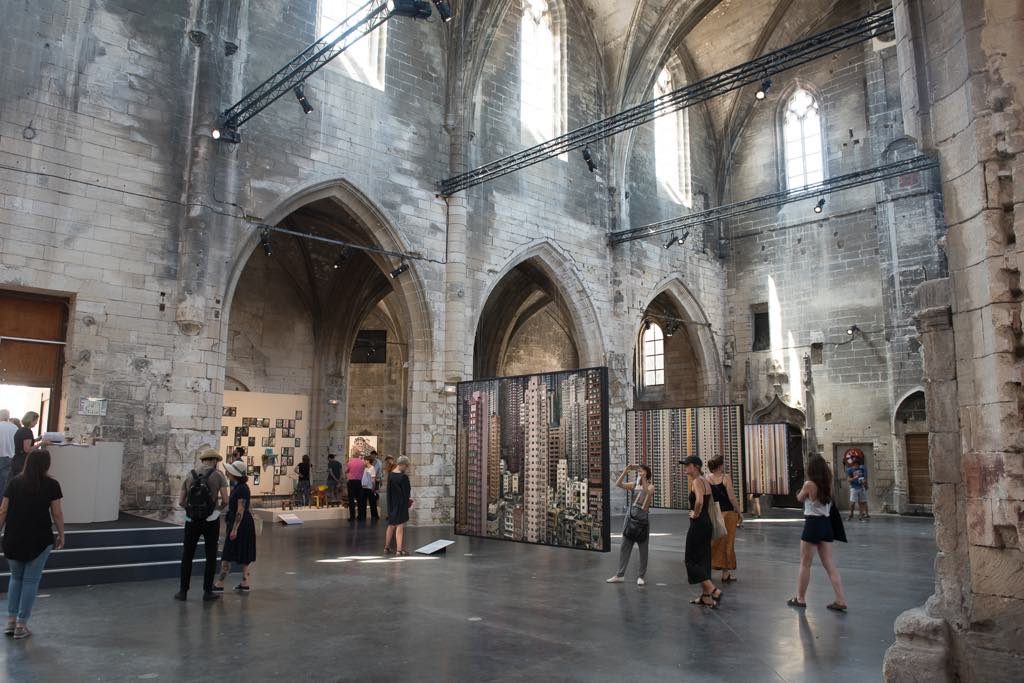
Michael Wolf’s retrospective, “Life in Cities” (through August 27), elegantly hung in an old church, the Église des Frères Prêcheurs, showed his ability to synthesize various ideas and present a different view of oft-visited cities.
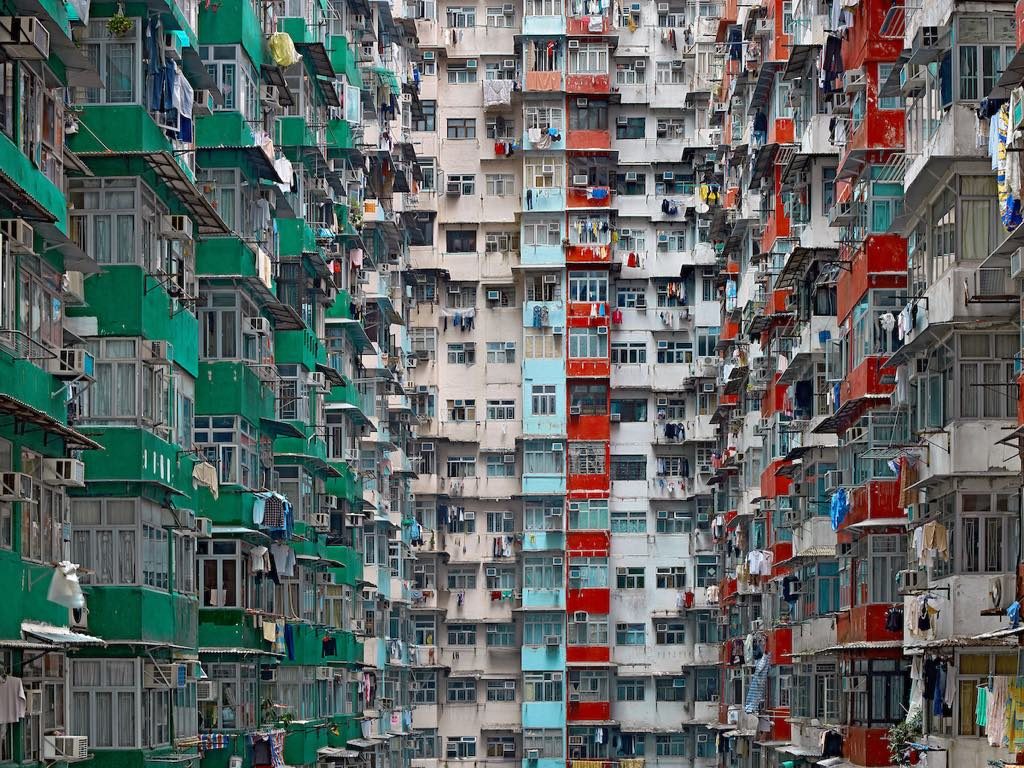
His series of compressed large-format images of Hong Kong buildings, “The Architecture of Density,” along with street-level images showing “informal Hong Kong” and simple chairs he found on the streets, display his particular vision as he collects photos and objects. Also compelling are the portraits of the rooms in a working-class building in Hong Kong, not so much because of the images themselves, but because they are presented in a space the same size as the actual living area, creating a sense of claustrophobia and discomfort.
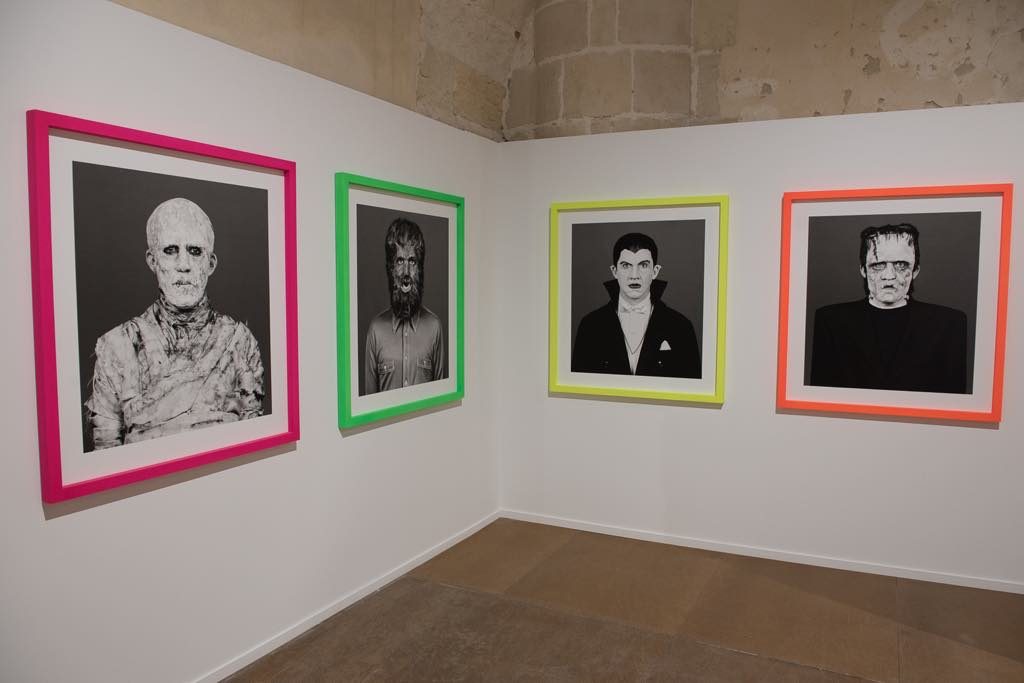
The “La Vuelta” exhibition, in the Chapelle Saint Martin du Megan through September 24, features 28 Colombian artists, working in everything from documentary to conceptual styles. Juan Pablo Echeverri presents series of portraits of superheroes and monsters in black and white, surrounded by gaudily colored frames.

In series of tombstones by Juan Manuel Echavrría, “Requiem NN,” the images change based on the angle of viewing, representing the before and after of unidentified corpses of victims of violence. One of the more popular exhibits is Oscar Muñoz’s six composite portraits, laid out flat.
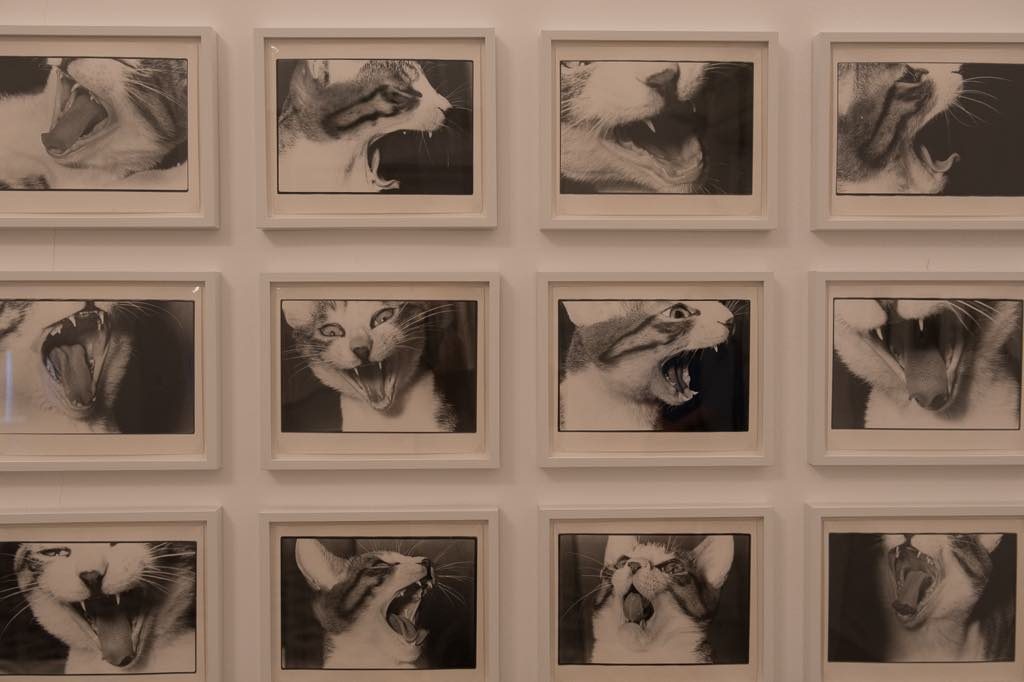
“The Incurable Egoist,” the first European retrospective of the innovative and quirky Japanese photographer Masahisa Fukase (1934-2012), at the Palais de L’Archevêché through September 24, is getting a lot of buzz. On show are his best-known works – family portraits (see image at top of page), photos of his own cat, and black-and-white raven photos (for months he photographed ravens in the sky from the same spot until he “started thinking like a raven; almost became one,” as the festival’s director, Sam Stourdzé, puts it) – as well as lesser-known works like the series “Berobero” (an onomatopoeic word for the sound of tongues kissing), and “Bukubuku,” underwater self-portraits made while he stayed in his own bath for a month.
The “Iran: Year 38” exhibition, at the Église Sainte Anne through August 27, with works by 66 Iranian photographers, is illuminating since we see so little work from the country. A major theme is disappearing names and faces, in images that explore the ideas of identity, collective memory and forgetting – ironic, since photography is often used as a way to remember.
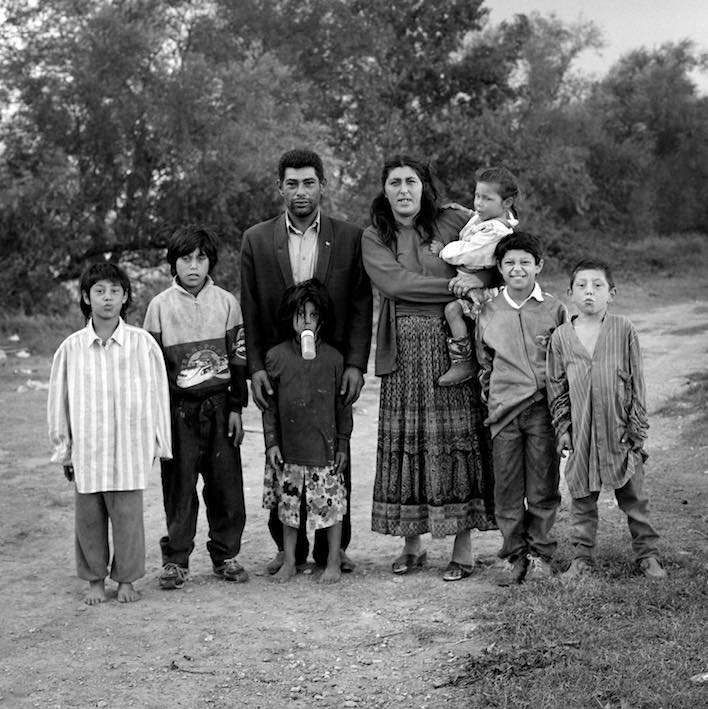
Mathieu Pernot’s “The Gorgons” (Maison des Peintres, through September 24) documents the life of one Roma family in Arles over a period of 20 years. He started the project in Arles when he was a student, then continued off and on, adding snapshots taken by the family in the intervals. Together, the images create a compelling long-form portrait of people living difficult lives.
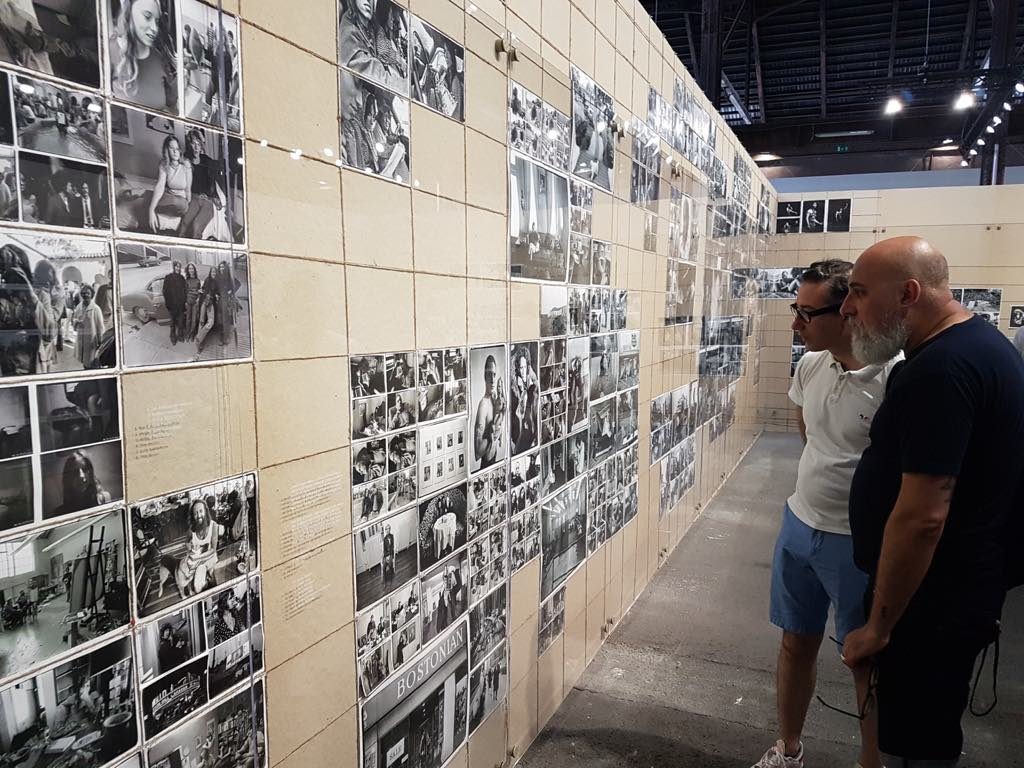
Annie Leibovitz’s “The Early Years, 1970–1983: Archive Project #1,” a show of her photojournalism from Rolling Stone magazine and other images, offers a fascinating window on the counterculture and celebrities of the 1960s, ’70s, and ’80s, made well before her transition to the large-format color portraits for which she became famous. The torrent of images is interesting but overwhelming and could have been edited down.
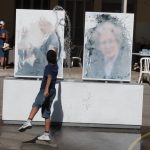
The Cosmos book space hosted many talks by artists, including one by photographer Joel Meyerowitz. His exhibition, “Early Works” (Salle Henri Comte, through August 27), presents relatively unknown black-and-white street images from New York and Paris, along with his more formal color “redheads,” and large format landscapes of Cape Cod. Like Leibovitz, Meyerowitz successfully transitioned from black-and-white street photography to large format color, shooting landscapes that still capture “the moment.”
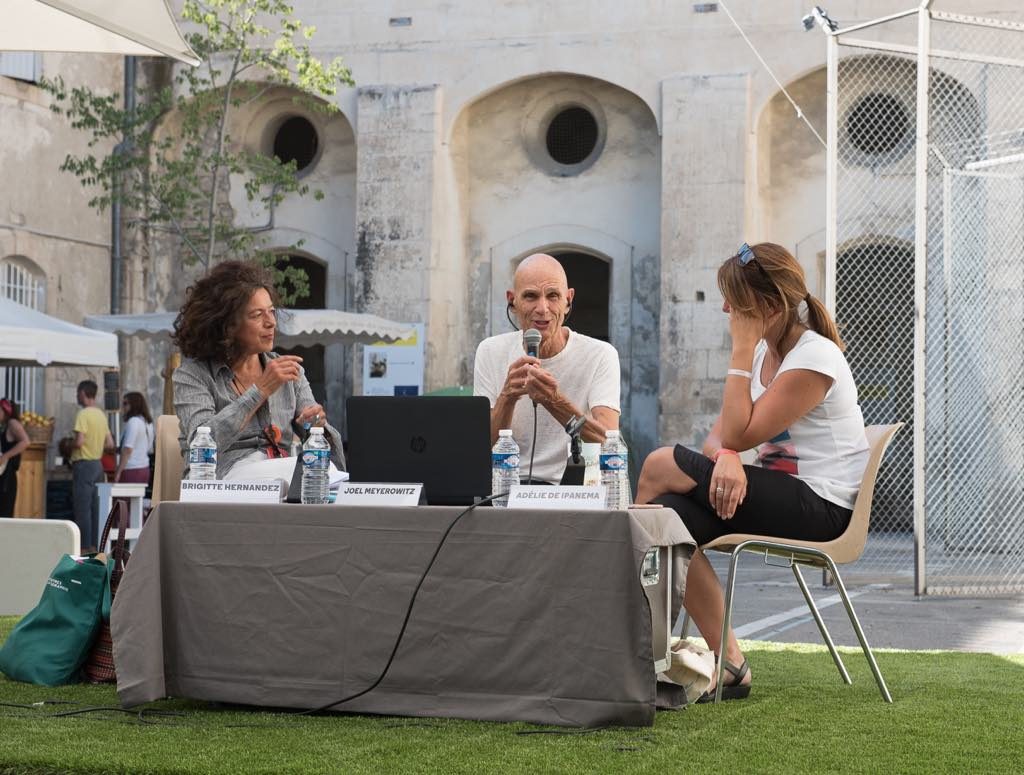
In his talk, Meyerowitz described himself as “an urbanist and an optimist” and spoke about how using a large-format camera on the street attracted people to him and helped him realize “that people were as beautiful and varied as a landscape.”
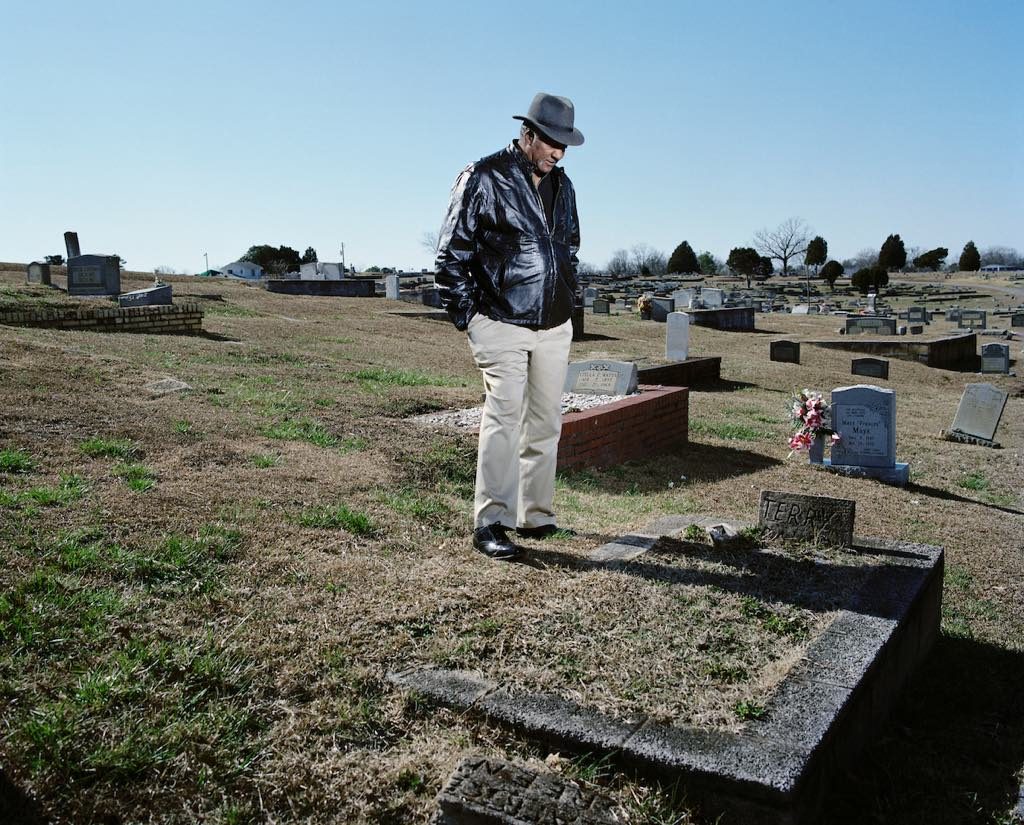
Matthieu Asselin’s “Monsanto: A Photographic Investigation” (Magasin Électrique, through September 24) is an incredibly well-researched and interesting way to show one corporation’s impact on people’s lives and the environment. He didn’t stop at photography – this high-impact exhibition includes actual Monsanto advertising campaigns, television footage, an example of an especially onerous contract with a farmer, and even a map of toxic sites hand-drawn by one of the residents of an affected area.

The Voies Off festival, which takes place at the same time as the official one, celebrates emerging and alternative photography, with over 110 exhibitions in satellite spaces and galleries throughout Arles.
One of the great things about the festival is that it is spread throughout the historical city of Arles, which is small and easily navigated on foot. It’s easy to take a break from the exhibitions to linger in the Place du Forum or Place Voltaire for a coffee or a glass of rosé, catch a bullfight, have a look at the Roman Arènes d’Arles, explore the nearby Roquette residential neighborhood, or visit the Saturday farmer’s market, considered one of the best in the region.
Favorite